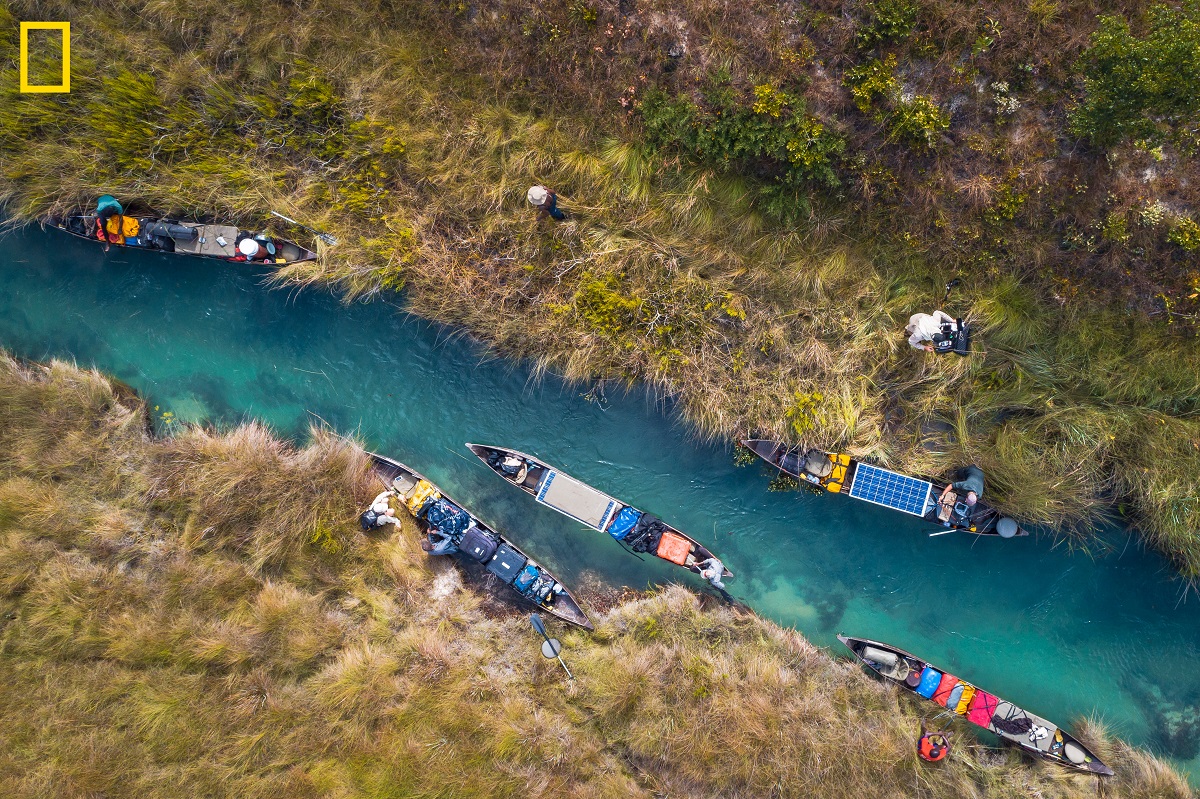
De Beers and National Geographic today announced the launch of Okavango Eternal, a strategic partnership to address one of the most critical conservation challenges in Africa: protecting the source waters of the Okavango Delta and the lives and livelihoods they support. The five-year commitment, which will help protect Africa’s endangered species, ensure water and food security for more than one million people and develop livelihood opportunities for 10,000 people, represents a critical inward investment to underpin the resilience and long-term recovery of the region in the years ahead. The partnership is focused on working hand-in-hand with communities throughout Okavango to deliver shared ecological solutions that lead to collective economic opportunity.

The Okavango Basin, spanning southern Angola, eastern Namibia, and northern Botswana, is the main source of water for the Okavango Delta. Located in northern Botswana, the Okavango Delta is one of Africa’s most important ecosystems, unrivalled in its biodiversity, and home to the world’s largest remaining elephant population as well as lions, cheetahs, wild dogs, and hundreds of species of birds.
The Okavango Delta’s health is dependent on its source lakes and rivers, which carry water that originates as rain in Angola’s highlands. While the Delta itself holds protected status, the Okavango Basin that feeds it does not, and the effects of climate change, deforestation, and upstream commercial agriculture are putting this critical lifeline at risk.

Since 2015, the National Geographic Okavango Wilderness Project has been working to secure permanent, sustainable protection for the Okavango Basin. National Geographic has been joined by De Beers — which has worked with the people of Botswana for more than 50 years to advance education, healthcare, livelihoods, and wildlife conservation, as part of the company’s Building Forever sustainability approach — to help secure protection for the Okavango Delta’s headwaters.
Over the course of five years, De Beers will work together with National Geographic by providing support, expertise, and funding to expand and accelerate work already underway, helping to establish sustainable local livelihoods in harmony with the Okavango Basin’s conservation. The partnership will focus on protecting the natural world and supporting communities across Botswana, Namibia, and Angola. This includes:
-
Protecting the natural world
-
Providing long-term wildlife corridor protection for the movement and proliferation of endangered species
-
Supporting critical conservation research through funding expeditions to gather new data, installing monitoring technology, and building the capacity of local researchers through grants and training
-
-
Supporting local communities
-
Helping ensure water and food security for more than one million people
-
Developing livelihood opportunities for 10,000 people
-
Enabling increased resilience to climate-related impacts
-
-
Raising awareness of the Okavango Delta and its benefits through compelling storytelling
-
Facilitating access to the Delta for local educators and youth
-
Helping bring the wonder and importance of the Delta and its headwaters to a wider global audience
-
“There is no doubt that the Okavango River Basin is under threat. How we treat this delicate ecosystem in the coming years will dictate its vitality — for its people and its wildlife — for future generations. This is our last chance to help protect this natural wonder and we are pleased to partner with De Beers on this critically important project,” said Dr. Steve Boyes, National Geographic Explorer, and leader of the National Geographic Okavango Wilderness Project.
“Together, we will leverage our collective resources to scale efforts to facilitate long-term, sustainable management of protected areas in the region by helping establish and further partnerships between governments, NGOs, and local communities through a sustainable conservation economy.”

Bruce Cleaver, CEO, De Beers Group, added: “De Beers has been in 50/50 partnership with both Botswana and Namibia for decades, making their people significant shareholders in De Beers and our commitment to the long-term sustainable development of the countries a core part of our business. As part of our Building Forever mission to ensure every De Beers diamond creates a positive and lasting impact in the place where it is discovered, we manage half a million acres of land for conservation across southern Africa, protecting wildlife, supporting livelihoods, and creating education and eco-tourism opportunities for the surrounding areas. However, many areas in southern Africa are still at risk, including the critically important Okavango Basin. That’s why our partnership with National Geographic is vital. By sharing our expertise and resources and working with local communities, governments, and other NGO partners, we will deliver a positive impact that is far greater than what any of us could achieve on our own, and ultimately protects the natural world and improves people’s lives.”

“It is exciting to see this level of support and partnership at a time when coming together to protect this one-of-a-kind place is so urgently needed,” said Koketso Mookodi, National Geographic Explorer and Botswana Country Director for the National Geographic Okavango Wilderness Project. “The people of the Okavango Basin rely on its life-giving waters and we must unite our efforts and do everything in our power to ensure that they continue to flow for the future of the people and the wildlife that call this place home.”
























